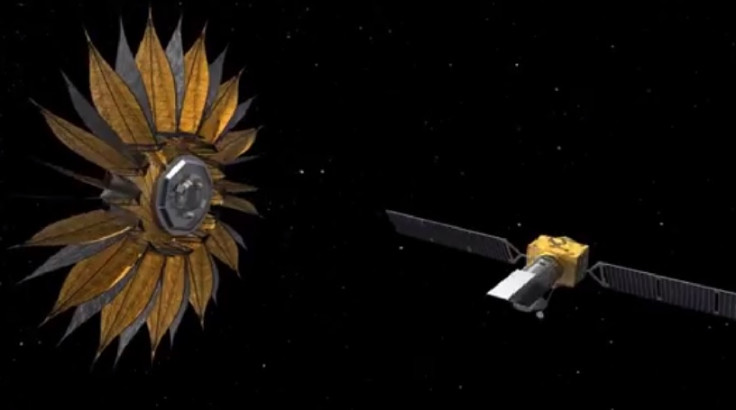Giant Sunflower-Shaped 'Starshade' Space Umbrella Aids Alien Worlds Hunt
A spacecraft shaped like an enormous sunflower may allow scientists to discover new Earth-like alien worlds as never before.
The Starshade, a large spacecraft which deploys to its full size in space, blocks out the light of distant stars so a space-based telescope can image exoplanets in orbit around the stars.
With this technology, researchers could take direct snapshots of other worlds and potentially find planets with alien life. It is currently in its easy phases of development, but it may allow scientists to hunt for small planets around nearby stars, as well as give researchers an insight into the atmospheres of alien worlds.
Sara Seager, an astrophysicist at Massachusetts Institute of Technology, told Space.com: "It's a very specialised screen in space. It blocks out the light from the star."

She added: "Only the planet's light enters the telescope. This is not what we normally do. Traditionally, the telescope does everything... It's the only way to find Earths with a relatively small and simple space telescope."
Essentially, the technology acts as a giant umbrella. Once in space, the Starshade unfurls and is positioned between the star and the telescope. It blocks the starlight, potentially revealing exoplanets in orbit around the star which were previously hidden.
The spacecraft will be equipped with thrusters to maneuver it into different positions during the course of the mission. Although it will take time for the spacecraft to shift into place for each target, it can perform other research tasks while waiting for the next star to come into view.
The shade is shaped like a flower because of the wave nature of light. Light waves could bend around a circle, which would create bright spots brighter than the planets astronomers hoped to detect. The petals help avoid this problem.
The mission is an old idea that US scientists are re-examining and recently, a large mock-up of the Starshade was unveiled.
Jeremy Kasdin, a researcher from Princeton University, told New Scientist: "This is the first time we've actually seen this thing deploy. That was a huge accomplishment."
Currently, the only way to look for exoplanets is to search for a dip in starlight as a planet passes in front of its star. This technique is used by Nasa's Kepley space telescope, but it cannot reveal if the planey harbours elements which support alien life, such as water.
The potential mission is expected to cost around $1 billion and will be able to target 55 bright stars across a period of three years. It is being studied by Nasa.
Stuart Shaklan, lead engineer on on the Starshade project at Nasa's Jet Propulsion Laboratory, said: "The shape of the petals, when seen from far away, creates a softer edge that causes less bending of light waves. lee light-bending means that the starshade shadow is very dark, so the telescope can take images without being overwhelmed by starlight."
Seager added that it might be possible to find Earth-like planets orbiting 22 of the 55 stars targeted by the mission. She emphasised that the project is advantageous as it eliminated the need for a large, expensive telescope.
She said: "You don't need a very fancy telescope that's highly termally and mechanically stable. You can use any old telescope."
© Copyright IBTimes 2025. All rights reserved.






















